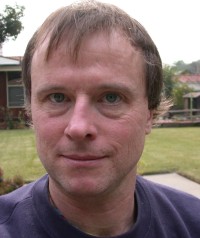


IEEE
Circuits and Systems Society Joint Chapter of the Vancouver/Victoria Sections
IEEE
Circuits and Systems Society Distinguished Lecturer Program
Building High Performance Neuromorphic and Bioinspired Systems:
Spike-based Digital Vision

Speaker:
Dr. Tobi Delbrück
IEEE CAS Society Distinguished Lecturer
Institute of Neuroinformatics
UZH / ETH Zurich
Zurich,
Switzerland
Dates and Locations
Monday, July 28, 2008, 11:00 am to 12:00 pm
IRMACS Presentation Studio, ASB 10900 (SFU Map)
Simon Fraser University, Burnaby, BC, Canada
Refreshment will be served after the talk.


Abstract
Conventional machine vision for the past 40 years has been based on sequences of image frames that are pulled from the camera and then processed on computers. Frame based image sensors are highly evolved but have fundamental drawbacks, including limited dynamic range, limited sampling rate, and the necessity for expensive post-processing. Biology teaches us that the outputs of the eye are asynchronously pushed to the brain in the form of digital spikes based on local decisions involving spatio temporal context. Recent developments in building asynchronous vision sensors that offer this same form of spike output have shown that they offer unique advantages in terms of latency, dynamic range, temporal resolution, and especially post processing cost. This lecture will discuss these developments and show a live demonstration of the unique capabilities of a silicon retina for machine vision.

Biography
of Dr. Tobi Delbrück
Tobi Delbruck is a group leader at the Inst. of Neuuroinformatics (INI), part of ETH Zurich and the University of Zurich, Switzerland and visiting scientist at Caltech. His group develops neuromorphic electronics, particularly vision sensor chips. He studied physics and applied mathematics as an undergraduate and received his PhD from Caltech in 1993 in Computation and Neural Systems with Carver Mead. He co-invented the standard neuromorphic adaptive photoreceptor circuit and bump circuit. Subsequently he worked for several years for Arithmos, Synaptics, and National Semiconductor, was one of the founding employees of Foveon. In 1998 he moved to Switzerland to join INI. In 2002 he was lead developer of the tactile luminous floor used in INI’s exhibit ”Ada: Playful Intelligent Space”. He has been awarded 8 patents, and has over 30 refereed papers in journals and conferences, 4 book chapters, and 1 book. He has been awarded 7 IEEE awards, including the 2006 ISSCC Jan Van Vessem Outstanding European Paper Award. He co-organized the demonstration sessions at the Neural Information Processing Systems (NIPS) meeting in 2004-2005 and the ISCAS demonstration session in 2007-2008, is an organizer of the Telluride Neuromorphic Engineering Workshop, is an officer of the CAS Sensory Systems Technical Committee and associate editor of the IEEE Transactions of Biomedical Circuits and Systems.

Webcast for the talk
Please click here after 10:45am on July 28, 2008 to join the WebEx-based webcast for the lecture. The password is "message".
Please click here for a quick guide for WebEx (written by Prof. Jim Cavers).
If we could not establish the webcast due to network problem, we will record the lecture offline using WebEx software and post it on the website later.

Contact
Please contact Dr. Jie Liang (Email: JieL at sfu dot ca) if
you have any question.




![]()
![]()
![]()
![]()